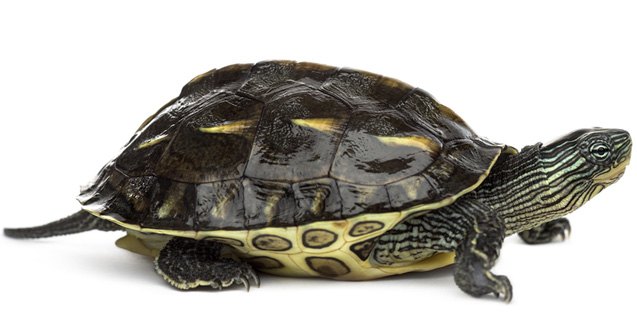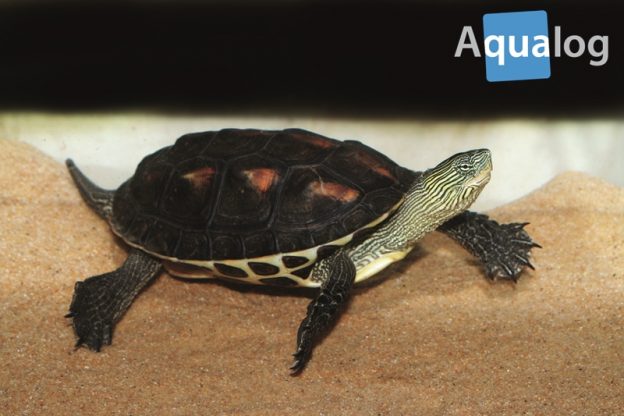What Do Striped Neck Turtles Eat?
Curious about what striped neck turtles eat? Well, you’ve come to the right place! These adorable reptiles have a unique diet that is worth exploring. From crunchy insects to juicy fruits, striped neck turtles have quite the appetite. So, let’s dive in and discover the culinary preferences of these fascinating creatures.
When it comes to feeding time, striped neck turtles have a varied and omnivorous diet. They are opportunistic eaters, meaning they will munch on pretty much anything that comes their way. In the wild, their meals consist of small invertebrates like insects, worms, and snails. These little reptiles are not picky eaters and will happily devour any tasty morsel that crosses their path.
Apart from their protein-rich diet, striped neck turtles also enjoy indulging in plant matter. They have a particular fondness for aquatic plants, such as duckweed and water lettuce. These leafy greens provide essential nutrients and fiber to keep them healthy and thriving. Additionally, they may snack on fruits and berries that fall into the water, adding a touch of sweetness to their diet. So, whether it’s a crunchy critter or a leafy delight, striped neck turtles are always ready to satisfy their hunger.

What do Striped Neck Turtles Eat?
Striped neck turtles, also known as painted turtles, are fascinating creatures with unique dietary needs. In this article, we will explore the feeding habits of striped neck turtles and provide valuable information on what they eat to ensure their health and well-being. So, if you’re a turtle enthusiast or considering getting a striped neck turtle as a pet, read on to discover their dietary preferences and nutritional requirements.
Dietary Habits of Striped Neck Turtles
Striped neck turtles are omnivorous, meaning they consume both plant and animal matter. In the wild, their diet consists of a variety of aquatic plants, insects, crustaceans, mollusks, and small fish. Their feeding habits may vary depending on the availability of food sources in their natural habitats.
When kept as pets, striped neck turtles require a balanced diet to thrive. It’s crucial to replicate their natural feeding habits as closely as possible to ensure their overall health and longevity. Providing a diverse diet that includes both plant-based and animal-based foods is essential for meeting their nutritional needs.
Plant-Based Foods
Plant-based foods should make up a significant portion of a striped neck turtle’s diet. These turtles enjoy a variety of aquatic plants, such as water lettuce, water hyacinth, duckweed, and water lilies. These plants not only provide essential nutrients but also serve as a source of hydration for the turtles.
It’s important to ensure that the plants offered to striped neck turtles are free from pesticides or any harmful chemicals. Before introducing new plants to their diet, it’s advisable to thoroughly wash them to remove any potential contaminants.
Animal-Based Foods
In addition to plant-based foods, striped neck turtles require animal-based protein sources in their diet. This can be provided through live or frozen prey items. Some suitable options include earthworms, mealworms, crickets, small fish, and shrimp.
It’s essential to ensure that any live prey items offered to striped neck turtles are appropriately sized. The size of the prey should be proportionate to the turtle’s mouth to prevent choking or injury. Frozen prey items should be thawed before feeding to enhance palatability.
Feeding Tips for Striped Neck Turtles
To ensure the well-being of your striped neck turtle, here are some important feeding tips to keep in mind:
1. Variety is key: Offer a diverse range of foods to meet their nutritional needs. This includes different types of plants, insects, and small fish.
2. Portion control: Feed your turtle an amount of food that they can consume within 15-20 minutes. Overfeeding can lead to obesity and health issues.
3. Calcium supplementation: Striped neck turtles require adequate calcium for healthy shell development. Dusting their food with calcium powder or providing calcium-rich food sources, such as cuttlefish bone, is essential.
4. Freshwater access: Ensure that your turtle has access to clean, fresh water at all times. This is crucial for hydration and digestion.
5. Feeding frequency: Younger striped neck turtles may require daily feedings, while adults can be fed every other day. Adjust the feeding frequency based on the age and activity level of your turtle.
Benefits of a Balanced Diet
Providing a balanced diet for your striped neck turtle offers several benefits. A proper diet ensures their overall health, promotes proper growth and development, and strengthens their immune system. It also enhances the vibrancy of their colors and keeps their shell strong and resilient.
Conclusion
In conclusion, striped neck turtles are omnivorous creatures that require a balanced diet consisting of both plant-based and animal-based foods. By replicating their natural feeding habits and providing a diverse range of foods, you can ensure the optimal health and well-being of these fascinating turtles. Remember to offer a variety of plants, insects, and small fish, while also considering portion control, calcium supplementation, and freshwater access. With the right diet and care, your striped neck turtle will thrive and bring joy to your life for years to come.
Key Takeaways: What do striped neck turtles eat?
- Striped neck turtles mainly eat small fish and insects.
- They also consume plants and algae as part of their diet.
- These turtles are omnivores, meaning they eat both animals and plants.
- Young striped neck turtles have a more carnivorous diet, while adults eat a greater amount of vegetation.
- It’s important to provide a balanced diet for striped neck turtles to ensure their health and well-being.
Frequently Asked Questions
Here are some common questions people have about the eating habits of striped neck turtles:
Q: What do striped neck turtles eat in the wild?
In the wild, striped neck turtles have a varied diet consisting mainly of aquatic plants and insects. They are omnivorous, which means they eat both plant and animal matter. They feed on a variety of aquatic vegetation, such as algae, water lilies, and duckweed, as well as small invertebrates like snails, worms, and insects.
They are also known to eat small fish and tadpoles if they come across them. However, their diet primarily consists of plant material.
Q: Can striped neck turtles eat fruits and vegetables?
While striped neck turtles primarily feed on aquatic plants and insects, they can also eat certain fruits and vegetables. However, it’s important to note that these should only be offered as occasional treats and not as a staple part of their diet.
Safe options include fruits like strawberries and melons, and vegetables like leafy greens and carrots. It’s important to chop or grate the fruits and vegetables into small, bite-sized pieces to make it easier for the turtles to consume.
Q: Do striped neck turtles eat meat?
Yes, striped neck turtles are omnivorous and can eat meat. They will readily consume small invertebrates like worms and insects, as well as small fish and tadpoles if given the opportunity. However, their primary diet still consists of plant material, so meat should only be offered sparingly and as a supplement to their regular diet.
It’s important to ensure that any meat offered to striped neck turtles is fresh, free from any chemicals or preservatives, and of appropriate size for the turtle to consume easily.
Q: How often should striped neck turtles be fed?
The frequency of feeding for striped neck turtles depends on their age and size. Generally, adult turtles can be fed every other day, while younger turtles may require daily feedings. It’s important to monitor their weight and adjust their feeding schedule accordingly to prevent overfeeding or underfeeding.
It’s also important to note that striped neck turtles are known to be opportunistic feeders, so it’s best to offer them smaller portions of food multiple times a day rather than one large meal.
Q: What should I do if my striped neck turtle refuses to eat?
If your striped neck turtle refuses to eat, it could be due to various reasons such as stress, illness, or changes in their environment. It’s important to first ensure that the temperature and humidity levels in their enclosure are appropriate and that they have access to clean water.
If the turtle still refuses to eat, it’s best to consult a veterinarian who specializes in reptiles for a proper diagnosis and guidance. They will be able to provide advice on any necessary dietary changes or potential health issues that may be affecting your turtle’s appetite.

Feeding Turty the Golden Thread Turtle
Final Thoughts
After exploring the dietary preferences of striped-neck turtles, it is clear that these fascinating creatures have a varied and interesting diet. From insects and crustaceans to plants and fish, these turtles are opportunistic feeders that adapt their meals based on what is available in their environment. This flexibility allows them to thrive in diverse habitats, from freshwater ponds to marshes and even slow-moving rivers.
When it comes to their food choices, striped-neck turtles are not picky eaters. They have a knack for finding and devouring a wide range of prey, thanks to their keen sense of smell and sharp eyesight. Whether it’s snacking on juicy earthworms, munching on crunchy beetles, or feasting on nutritious aquatic plants, these turtles know how to satisfy their hunger.
In conclusion, the striped-neck turtle’s diet reflects its adaptability and resourcefulness. From insects to vegetation, they have a versatile palate that allows them to thrive in various environments. As we continue to learn more about these incredible creatures, it becomes evident that their dietary habits play a vital role in their survival and overall ecological balance. So, the next time you spot a striped-neck turtle, take a moment to appreciate their diverse menu and the important role they play in the ecosystem.

